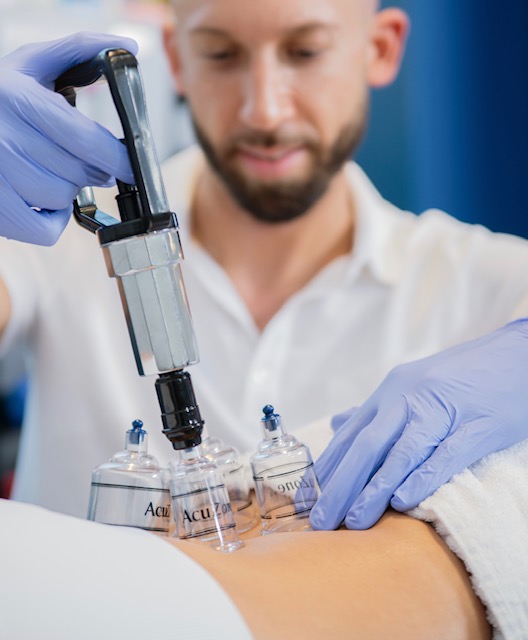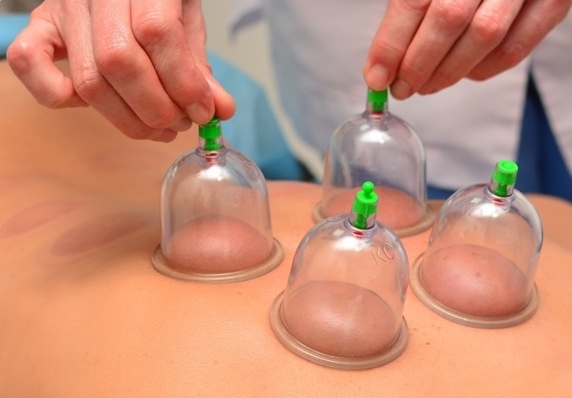Cupping Therapy
What is Cupping?
Cupping is a therapeutic treatment used in our physical therapy practice to relieve muscle tension, improve circulation, and promote healing.
How long has cupping been around?
Cupping has been popular in Egyptian, Chinese, and Middle Eastern cultures going back thousands of years, but increasing numbers of people worldwide have been adopting it. Celebrities and athletes have popularized it in the U.S. in recent years, specifically Michael Phelps during the 2016 Summer Olympics. Our clinicians decided to learn this treatment in order to add it to their available treatment options for individuals dealing with muscle and joint pain.

Who would benefit from cupping?
Cupping therapy is good for individuals dealing with muscle, tendon, and myofascial tension. It works particularly well for a widespread region of tightness because we can treat a large area at one time. It is used for people dealing with muscle knots or trigger points, tendinitis, or bursitis. The cups come in many sizes to treat different regions of the body but our most common use in the clinic is for neck and back pain.
How does it work?
The physiologic effect of cupping is not fully understood but most clinicians believe it provides a unique stretch on connective tissues by lifting them away from the body and loosening adhesions. The negative pressure environment brings blood flow to stagnant layers of muscles, tendons, ligaments, fascial tissue, and skin. The stretch breaks down adhesions and the increase in blood flow promotes relaxation and healing. There is limited high quality evidence because cupping is a difficulty intervention to test in a “double-blinded” study. A meta-analysis from 2015 concluded that cupping was effective in alleviating neck pain and low back pain at least in the immediate term.

What is the technique and does it hurt?
We do two forms of cupping at our clinic; static and dynamic. Static cupping involves the use of plastic cups placed over the treatment area, then suctioned using a pump to create a negative pressure environment and pull up on the tissues underneath. The cups stay in place and maintain tension on the tissue for a treatment time ranging from 10-20 minutes. Dynamic cupping involves the use of a rubber, flexible cup which is compressed over the treatment area to create suction and then slowly moved over the tissues in a deliberate pattern for roughly 1 minute. Most people do not find static cupping to be painful but report a feeling of strong tension which lessens after the first 1-2 minutes of treatment. Dynamic cupping generally causes some discomfort for a brief period of time as it is moved, although some people describe this as a therapeutic sensation.
Is Cupping safe and are there side effects?
The cupping therapy that we provide at our clinic is considered very safe and has only mild side effects. The main side effects are discomfort during the treatment and bruising of the skin that has been treated. This discoloration of the skin is due to broken blood vessels just beneath the skin which occurs from the suction. This will leave a circular bruise on the skin for a few days to a couple weeks, depending on the individual. There is no long-term damage from this and is generally just an aesthetic change until the skin returns to normal. Although cupping therapy may involve 2 or more treatment sessions, we do not treat the same area until the bruising has resolved. Every one of our patients undergoes a full evaluation before treatment. If your therapist believes that cupping is an appropriate treatment for you, the benefits and side effects will be reviewed at the time of intervention.
